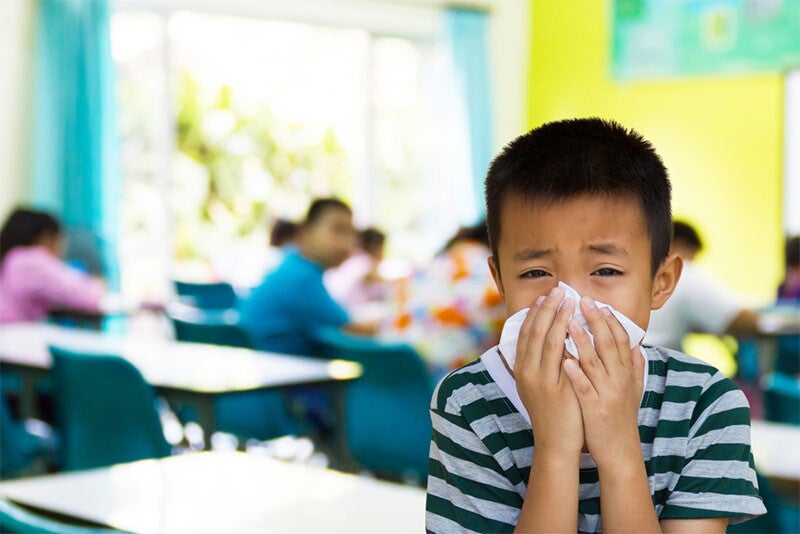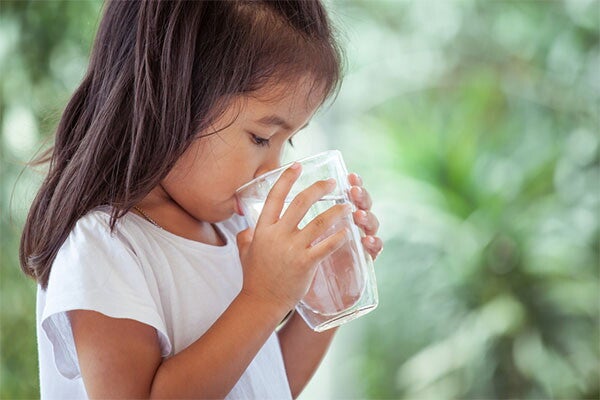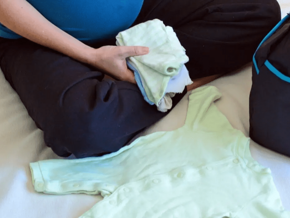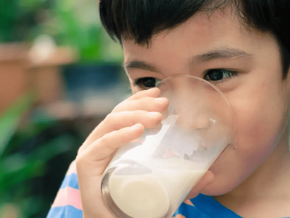
When your child steps into the classroom, they’re not just learning ABCs and 123s—they're also being exposed to hundreds of other little things. Think bacteria, viruses, and other common diseases that love close-knit environments like schools. And while that may sound scary, it’s also a part of growing up.
Still, no parent wants to deal with surprise fevers, late-night vomiting, or sudden class suspensions due to outbreaks. Whether you're a first-time parent sending your preschooler to daycare or a seasoned school-mom managing multiple kids' schedules, staying ahead of common childhood illnesses can make a world of difference.
Learn about the most common diseases Filipino children tend to catch in school, the symptoms to watch for, and how you can help prevent them. Backed by local health advisories, pediatrician-recommended strategies, and fellow parent hacks, this is your practical, real-talk guide to keeping your little one safe, healthy, and happy throughout the school year.
6 Common Diseases Kids Pick Up in School

These common diseases are usually unavoidable, but you can manage them better with the right know-how.
Knowing these common diseases can help you arm your kids with more than just their baon and backpacks:
1. Coughs, colds, and the common flu
These are hands-down the most common illnesses children catch in school, especially during the rainy season in the Philippines (June to November). Classrooms are breeding grounds for viruses like rhinovirus and influenza, which spread easily through sneezing, coughing, and shared surfaces.
Symptoms to watch for: Runny nose, mild fever, sore throat, cough, body aches
Why it matters: While usually mild, flu can become serious in young children. According to the Philippine Pediatric Society, annual flu vaccination is still one of the best defenses, especially for school-aged kids.
Parent tip: Always pack a small hygiene kit—alcohol, tissues, extra masks—and remind your kids about personal hygiene practices, such as handwashing. Teach your child about the "elbow sneeze," too. Don’t forget to stay updated on your child’s vaccinations, too.
2. Hand, foot, and mouth disease (HFMD)
According to the DOH, the number of HFMD cases in the Philippines grew three times higher compared to 2024. This virus tends to make the rounds in preschools and daycare centers, where toy-sharing and close contact are common. Caused by the coxsackievirus, HFMD leads to painful sores in the mouth and rashes on hands and feet.
Symptoms to watch for: Fever, reduced appetite, painful mouth sores, and a rash on palms, soles, or buttocks
Why it matters: HFMD spreads quickly and is more common in younger kids. In the Philippines, the DOH has issued several regional health advisories during small outbreaks—especially during summer.
Parent tip: It’s usually self-limiting but offer cold liquids and soft food like lugaw or yogurt for comfort. Keep your child home to prevent the spread. Again, teach personal hygiene for kids to reduce risk.
3. Gastroenteritis (Stomach Flu)

Stomach flu is one of the most common diseases among children. Your quickest remedy is to rehydrate your kid with fluids. Consult a doctor if you’re seeing signs of extreme dehydration.
Food poisoning? Maybe. But often, it's viral gastroenteritis—a fast-moving infection that causes vomiting and diarrhea. Kids can pick it up from unclean hands, food, water, or shared items.
Symptoms to watch for: Vomiting, watery diarrhea, stomach cramps, mild fever
Why it matters: Dehydration is the biggest concern, especially for toddlers. In 2023, several public schools in Metro Manila recorded spikes in gastroenteritis cases, often linked to unsafe water or food sold near campuses.
Parent tip: Always pack a water tumbler with clean drinking water. At home, offer small sips of oral rehydration salts (ORS) and avoid giving sugary drinks or milk during active vomiting.
4. Head lice (kuto)
So, this is not exactly a disease, but kuto can be a very itchy problem. It’s also still super common in schools, especially those with younger children. Lice spread fast through shared hairbrushes, hats, or close contact.
Symptoms to watch for: Persistent head scratching, small white nits or lice eggs (lisa) on hair strands, visible lice on the scalp
Why it matters: While not medically dangerous, head lice can lead to sores, infections, and social stigma. According to DepEd health bulletins, schools still struggle to control outbreaks, especially in crowded classrooms.
Parent tip: Don’t panic! Try over-the-counter anti-lice shampoos or natural remedies like coconut oil. And comb through hair regularly with a fine-tooth comb.
5. Chicken pox (bulutong)
Though there's a vaccine, chickenpox still pops up occasionally, especially in schools where not all kids are vaccinated. It spreads through coughs, sneezes, and direct contact with blisters.
Symptoms to watch for: Fever followed by an itchy, blister-like rash that starts in the face, back, and chest, then spreads across the body. The rash then forms a crust.
Why it matters: Though usually mild, complications can arise in young children. The Department of Health (DOH) recommends the varicella vaccine, but it's not yet part of the free Expanded Program on Immunization (EPI). Most health centers are limited to the MMR vaccine. Make sure to check your options with your healthcare professional.
Parent tip: If your child gets it, keep their nails short (to manage scratching), their skin cool, and apply soothing calamine lotion. Oatmeal baths help too!
6. Dengue fever
While dengue does not spread through classmates, it is still a major threat during the school year. According to Dengue.com, the Aedes mosquito can breed in playgrounds and even roofs, and the illness is more common in schools with open-air classrooms, stagnant water near campuses, or poor drainage.
Symptoms to watch for: Sudden high fever, skin rashes, bleeding gums, vomiting, body pain. Read more about other dengue symptoms.
Why it matters: The DOH reports thousands of dengue cases every year in school-age children, especially from June to October (June to February, in other studies). The number of cases from January to March 2025 already grew 73% compared to 2024. Severe dengue can be life-threatening, with symptoms appearing like the regular flu at the beginning.
Parent tip: Spray your child with mosquito repellent before school. Those anti-mosquito stickers? They could be a lifesaver! You can even pack mosquito repellant in their hygiene kits and remind them to reapply throughout the day. Light-colored, long-sleeved clothing also helps. Remind your school to conduct regular clean-up drives and fumigation, if they’re already not doing it.
Yes, school can be a petri dish, but it’s also a place where your child grows, makes friends, and builds resilience. With the right info and a dash of prevention, we can help them enjoy all the good stuff and better manage these common diseases along the way.
Stressed about the common diseases your kids keep catching in school? Ask other parents how they deal in the ParenTeam Moms and Dads Facebook page.
References
“Childhood Immunization Schedule.” 2021. Philippine Pediatric Society. Philippine Pediatric Society. Accessed June 5, 2025. https://pps.org.ph/wp-content/uploads/2021/03/CHILDHOOD-IMMUNIZATION-SCHEDULE-2021-edited.pdf.
“DOH: Cases of Foot, Mouth, Hand Disease Triple From Jan. 1 to Feb. 22.” n.d. Philippine News Agency. https://www.pna.gov.ph/articles/1245192.
“DOH: Dengue Cases up 73% in First 2 Months of 2025.” n.d. Philippine News Agency. https://www.pna.gov.ph/articles/1245853.
“Expanded Program on Immunization.” n.d. Department of Health. Accessed June 5, 2025. https://doh.gov.ph/uhc/health-programs/expanded-program-on-immunization/.
Undurraga, Eduardo A., Frances E. Edillo, Jonathan Neil V. Erasmo, Maria Theresa P. Alera, In-Kyu Yoon, Francisco M. Largo, and Donald S. Shepard. 2017. “Disease Burden of Dengue in the Philippines: Adjusting for Underreporting by Comparing Active and Passive Dengue Surveillance in Punta Princesa, Cebu City.” American Journal of Tropical Medicine and Hygiene 96 (4): 887–98. https://doi.org/10.4269/ajtmh.16-0488.
World Health Organization: WHO and World Health Organization: WHO. 2024. “Dengue and Severe Dengue.” April 23, 2024. https://www.who.int/news-room/fact-sheets/detail/dengue-and-severe-dengue.




























